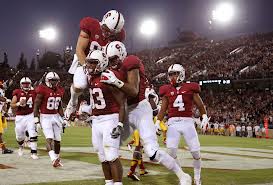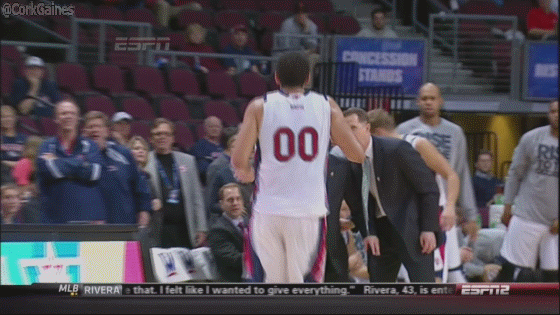Vocabulary, Intimidation, and Recruiting
WARNING: Another sports-related post follows...
There was a terrific piece by Dan Wetzel from Yahoo! earlier in the week on the recent rise to prominence of the Stanford Football program and that featured an in-depth interview with the team's head coach David Shaw. If you don't follow college football and are not familiar with Stanford's team, the essential bit of information is this - after many years as a middling to unsuccessful program the team, under former coach Jim Harbaugh (now the head coach of the NFL's San Francisco 49ers), and current coach Shaw has had a recent and remarkable run to national prominence, posting a 35-5 record over the last three seasons, and sending a steady stream of players on to the NFL.
All this success has transpired while the program contends with what have been traditionally seen as disadvantages in big-time college sports - Stanford is a really tough school to qualify for academically, and once enrolled, the academic demands the school places on its students, (football players too), often rule the school out as a choice for the kind of elite football prospect that a major college program needs in order to compete with the likes of Alabama, Texas, or South Carolina. So getting enough talented players that are good enough for Division 1 play AND that can qualify academically AND actually want to attend Stanford - well, you see what kind of a recruiting challenge that faces Shaw and his staff.
So beyond validating a potential recruits' interest in Stanford, reviews of their high school game tapes, verification of the academic transcripts, and ensuring their SAT scores are suitably impressive - what else does Shaw do when determining if a player would be a good match for the Stanford program?
He evaluates a player's vocabulary. Yep, their vocabulary. Check this from the Yahoo piece:
Superior academics are mandatory for admission and success at the elite university. Great athletic ability, strength and speed are a necessity to play for the reigning Pac-12 champions. Character, leadership and motivation are highly valued intangibles.
And then there is something unique Stanford coaches evaluate when meeting with a prospect, something that few would think predicts football success.
"Vocabulary," Shaw said.
Vocabulary?
"Yes, you look for vocabulary," he said. "Can this kid express himself in a way that befits a Stanford man?
"You walk around and talk to our kids, they look you in the eye," Shaw continued. "And we play that way. We are going to play right at you, in your face, 'Here is who we are, here is how we play.' There is a one-to-one correlation. There is no doubt about it to me. The inability to be intimidated by a person or a situation is something that is significant.
Really interesting spin on the recruiting evaluation process - particularly in a job where 'success' is complex and multi-dimensional (probably similar to the roles in your organization).
Sure, 'success' as a college football player entails excellence at some significant physical levels - speed, strength, etc. But at a place like Stanford, 'success' also means excelling in a demanding academic environment, one where a player almost certainly will not be the smartest person in the room, and where there status as an athlete probably doesn't afford them any special treatment greater than someone who is a great scientist or developer or entrepreneur.
Look again at the last line in the David Shaw quote above - "The inability to be intimidated by a person or a situation is something that is significant." It is pretty easy to tell who is or isn't going to be intimidated on a football field, but in business and in life - well, it is not so easily discerned.
Can a person's vocabulary be a good proxy for that rare quality - the ability to not get pushed around a conference room or in a meeting, or to use a recently trendy term, to 'lean-in' even when it would be easier to withdraw?
No matter what we think, it seems to be working for Shaw and Stanford.

 Steve
Steve


